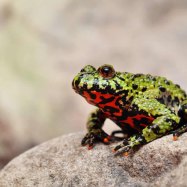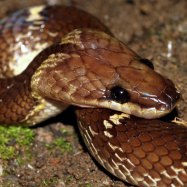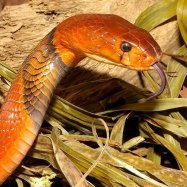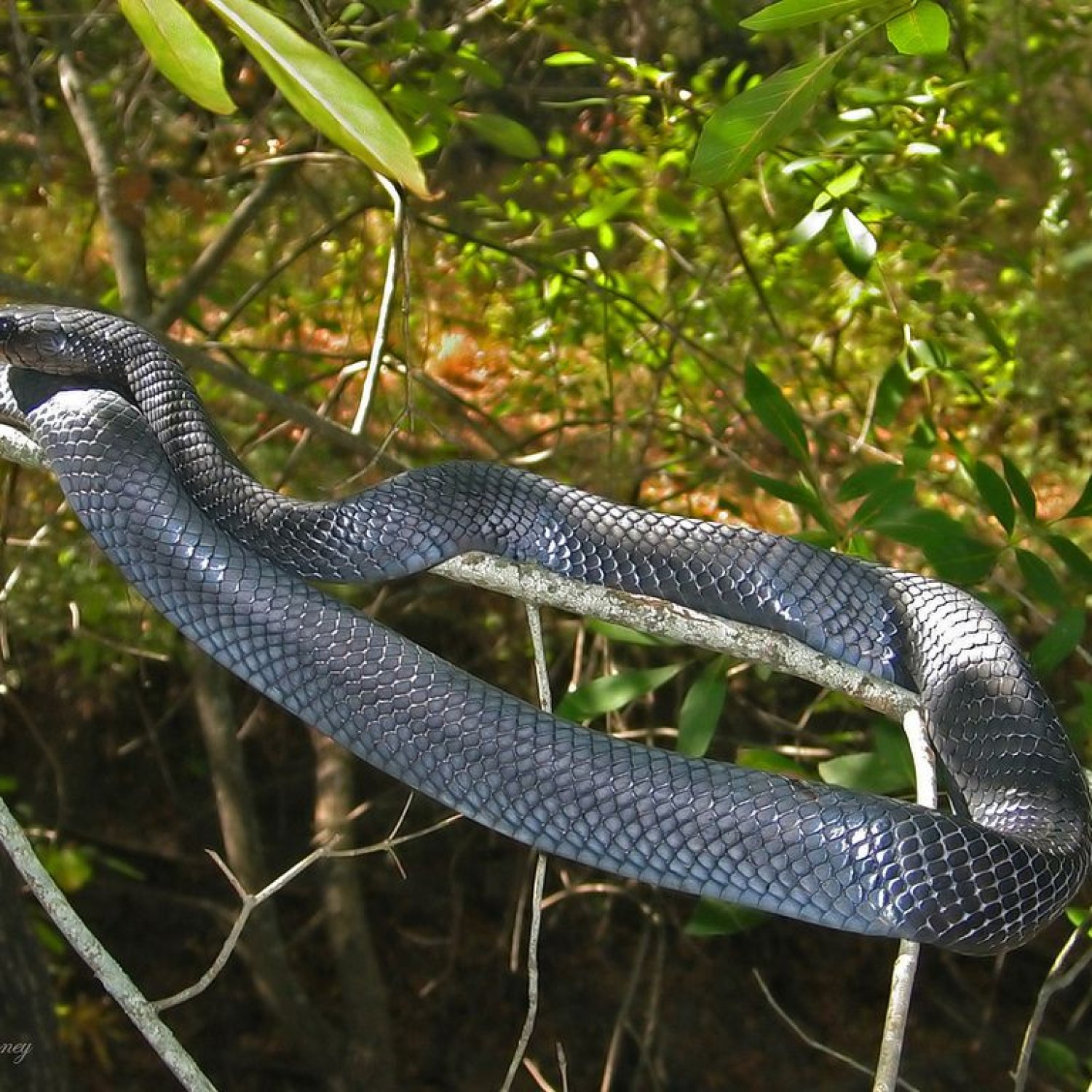
Texas Indigo Snake
4.5 to 6.5 feet
The Texas Indigo Snake, found in Texas, New Mexico, and Arizona, is a beautiful and unique member of the Colubridae family. With a length of 4.5 to 6.5 feet, a slender and elongated body shape, this non-venomous snake is known for its docile nature and striking appearance. Explore the natural habitats of this fascinating reptile for a chance to spot this elusive creature in the wild! #TexasIndigoSnake #Colubridae #WildlifeSpotting
Animal Details Summary:
Common Name: Texas Indigo Snake
Kingdom: Animalia
Habitat: Grasslands, savannas, deserts, and scrubland
Texas Indigo Snake: The Mighty Serpent of the Southern and Western United States
Deep in the heart of Texas, amongst the vast and varied landscapes, dwells a magnificent creature that has been feared and revered for centuries - the Texas Indigo Snake. Scientifically known as Drymarchon melanurus erebennus and commonly referred to as the Texas Indigo Snake, this powerful reptile is a fascinating and vital part of the ecosystem in the southern and western parts of the United States.As we delve into the world of the Texas Indigo Snake, we will uncover its unique characteristics, habitat, feeding habits, and more. So take a deep breath and get ready to embark on a thrilling journey through the life of this remarkable animal Texas Indigo Snake.
The Taxonomy of the Texas Indigo Snake
Like all living beings, the Texas Indigo Snake has a specific classification within the animal kingdom. It belongs to the Animalia kingdom, Chordata phylum, Reptilia class, Squamata order, and Colubridae family. These scientific classifications may sound complex, but they simply mean that the Texas Indigo Snake is a reptile with a backbone, scales, and belongs to the same family as other colubrids such as king snakes and rat snakes.The Thriving Habitat of the Texas Indigo Snake
The Texas Indigo Snake thrives in a variety of habitats, including grasslands, savannas, deserts, and scrublands. These habitats provide the perfect mix of open spaces, shelter, and food for this large and powerful snake. They can often be found hiding in burrows or under logs and rocks, waiting for their next meal.One of the most interesting things about the Texas Indigo Snake is its ability to adapt to different environments. In the deserts of Texas, they may blend in with the sandy terrain, while in the grasslands, their distinctive black or bluish-black coloration stands out against the green foliage.
A Carnivorous Diet for the Mighty Predator
As a carnivore, the Texas Indigo Snake plays a vital role in controlling the populations of small mammals, reptiles, and birds in their habitat Titan Beetle. Their diet mainly consists of rodents, lizards, frogs, and birds. As opportunistic hunters, they are not picky eaters and will consume anything they can overpower.Unlike venomous snakes, the Texas Indigo Snake is non-venomous and kills its prey by constriction. They use their powerful bodies to wrap around their victim and squeeze until it suffocates. While this may sound brutal, it is a natural and necessary process that maintains a balance in the ecosystem.
Southern and Western Distribution of the Texas Indigo Snake
The Texas Indigo Snake can be found in several southern and western states in the United States, including Texas, New Mexico, and Arizona. However, their distribution is not evenly spread throughout these states. In Texas, they are found extensively in the western regions, while in New Mexico and Arizona, they are predominantly found in the southern parts.The Stunning Look of the Texas Indigo Snake
One cannot help but be captivated by the striking appearance of the Texas Indigo Snake. They have a slender and elongated body, making them one of the largest snakes in the United States, reaching lengths of 4.5 to 6.5 feet. Their most defining feature is their shiny, jet-black color, which can also appear bluish in certain light. However, their underside often has a reddish or orange hue, making them a beautiful sight to behold.Interestingly, the coloration of the Texas Indigo Snake changes as they age. Younger snakes tend to have more vibrant colors, while adults have a darker tone, possibly to aid in camouflage.
Intriguing Behavior of the Texas Indigo Snake
In addition to their appearance, the behavior of the Texas Indigo Snake is also fascinating. These strong and agile creatures are known for their swift movements and quick reflexes. When threatened, they will often try to escape, but if faced with danger, they can be fierce and powerful.As solitary animals, the Texas Indigo Snake is most active during the day and will spend much of their time basking in the sun. They are also excellent climbers and can be seen scaling trees or large rocks in search of prey.
The Threats Facing the Texas Indigo Snake
While the Texas Indigo Snake may be a top predator in its habitat, it is not without its own predators and challenges. One of the major threats facing this species is habitat loss due to human activities such as agriculture and urbanization. As their natural habitats continue to shrink, so does the population of the Texas Indigo Snake.Furthermore, illegal collection and trade for the pet industry pose a significant threat to this species. Despite being protected by state and federal laws, the beautiful colors and large size of the Texas Indigo Snake make it attractive to collectors, leading to a decline in their numbers.
Conservation and Protection Efforts for the Texas Indigo Snake
Fortunately, there are efforts in place to protect and conserve the Texas Indigo Snake. In some states, they are listed as a species of concern, and there are also conservation programs dedicated to tracking and monitoring their populations.Furthermore, educational efforts are being made to raise awareness about the importance of these animals in their ecosystems and to discourage the illegal collection and trade of the Texas Indigo Snake.
Final Thoughts
In conclusion, the Texas Indigo Snake is a remarkable and essential creature that plays a vital role in the ecosystems of southern and western United States. Their stunning appearance, unique behavior, and crucial position in the food chain make them a fascinating subject to study and admire.However, it is important to remember that the Texas Indigo Snake, like all living beings, requires our protection and conservation efforts to thrive. By learning more about this magnificent animal and spreading awareness, we can all do our part in ensuring that future generations will continue to marvel at the beauty and strength of the Texas Indigo Snake.

Texas Indigo Snake
Animal Details Texas Indigo Snake - Scientific Name: Drymarchon melanurus erebennus
- Category: Animals T
- Scientific Name: Drymarchon melanurus erebennus
- Common Name: Texas Indigo Snake
- Kingdom: Animalia
- Phylum: Chordata
- Class: Reptilia
- Order: Squamata
- Family: Colubridae
- Habitat: Grasslands, savannas, deserts, and scrubland
- Feeding Method: Carnivorous
- Geographical Distribution: Southern and western parts of the United States
- Country of Origin: United States
- Location: Texas, New Mexico, and Arizona
- Animal Coloration: Black or bluish-black with a reddish or orange underbelly
- Body Shape: Slender and elongated
- Length: 4.5 to 6.5 feet
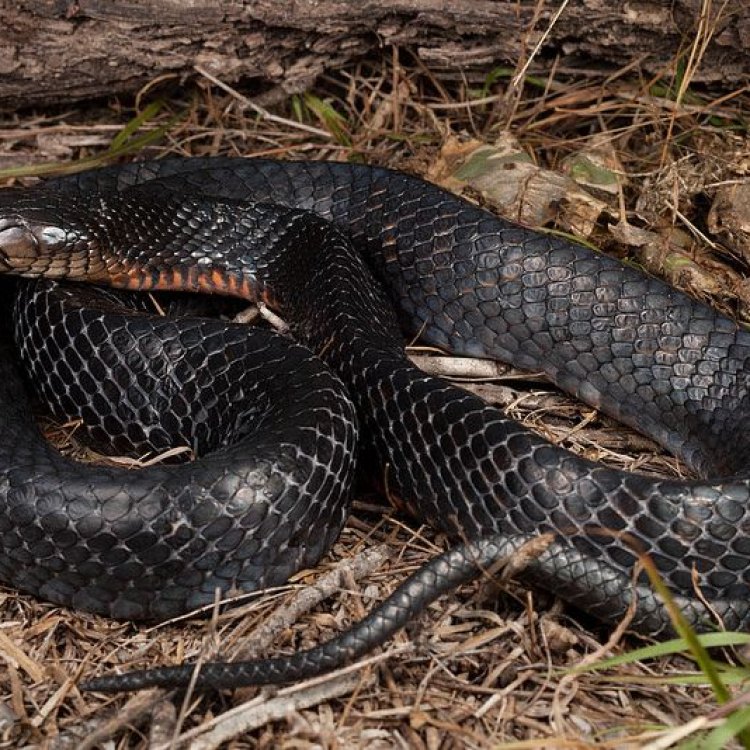
Texas Indigo Snake
- Adult Size: Large
- Average Lifespan: 15 to 20 years
- Reproduction: Sexual
- Reproductive Behavior: Mating occurs from late March to early June
- Sound or Call: Hissing
- Migration Pattern: Non-migratory
- Social Groups: Solitary
- Behavior: Nocturnal and secretive
- Threats: Habitat loss, road mortality, persecution, and collection for the pet trade
- Conservation Status: Threatened
- Impact on Ecosystem: As top predators, they play a vital role in controlling rodent populations
- Human Use: Illegal pet trade
- Distinctive Features: Shiny scales, smooth body, and powerful jaws
- Interesting Facts: Texas Indigo Snakes are non-venomous and are known for their agility and speed
- Predator: Humans, birds of prey, and larger snakes
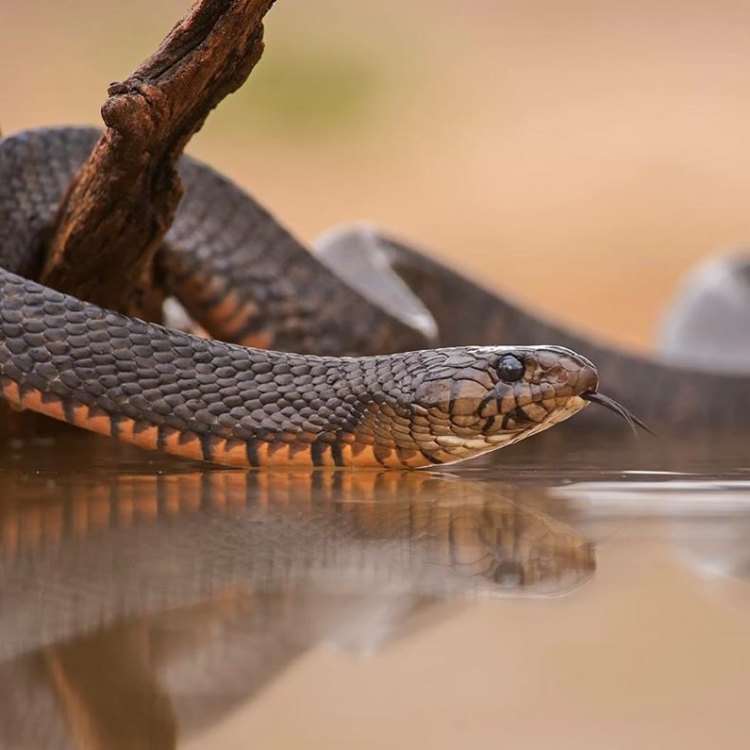
Drymarchon melanurus erebennus
The Magnificent Texas Indigo Snake: A Threatened Species With Unique Qualities
When one thinks of a snake, the image of a fearsome, slithery creature may come to mind. But one species of snake in Texas is shattering this stereotype with its striking appearance and fascinating behavior. The Texas Indigo Snake, also known as the Drymarchon corais erebennus, is a large non-venomous snake that inhabits the south-central region of the United States, particularly Texas and parts of Oklahoma and Louisiana. This magnificent species has caught the attention of biologists and snake enthusiasts alike, not only for its impressive size and unique features but also for its threatened status and crucial role in the ecosystem PeaceOfAnimals.Com.Adult Size and Lifespan
The Texas Indigo Snake is a reptile of grand proportions. They are known as one of the longest snakes in the United States, with adult individuals typically reaching lengths of 6-8 feet. Some exceptional specimens have been recorded to be over 9 feet long, making them the largest native snake species in Texas. Their size alone is enough to catch the eye of anyone who comes across one of these remarkable creatures.
In addition to their impressive size, Texas Indigo Snakes also have an average lifespan of 15 to 20 years in the wild. With proper care, these snakes can live even longer in captivity, making them a long-term commitment for those who choose to keep them as pets.
Reproduction and Mating Behavior
As sexual animals, Texas Indigo Snakes engage in a unique mating ritual. Mating occurs from late March to early June, with males competing for the attention of females. The males engage in intense combat, intertwining their bodies and pushing against each other to establish dominance and win the opportunity to mate Twig Snake. Once a victor is determined, the male mates with the female by coiling his body around hers, and the two will remain in this position for several hours.
After mating, females will lay a clutch of 6-18 eggs in a suitable location. They are attentive mothers, coiling their bodies around the eggs and protecting them until they hatch. This reproductive behavior is just one of the many intriguing facets of the Texas Indigo Snake's life cycle.
Hissing Sound and Nocturnal Behavior
When it comes to communication, the Texas Indigo Snake is not known for making loud calls or songs like some bird species. Instead, these snakes produce a hissing sound when they feel threatened, exhaling air through their glottis. This distinctive sound is often accompanied by a warning posture, with the snake raising its head and flattening its neck to appear more intimidating. This behavior serves as a defense mechanism to deter potential predators.
Aside from hissing, Texas Indigo Snakes are generally quiet creatures, especially during the day. They are nocturnal, meaning they are most active at night and prefer to rest during the day. This behavior may contribute to the mystique surrounding these snakes, as they are secretive and rarely seen by humans.
Social Groups and Migration Patterns
Unlike some snake species that live in colonies or groups, the Texas Indigo Snake is predominantly a solitary creature. They spend most of their lives alone, only coming together during the mating season and occasionally seeking shelter in communal dens during cold weather.
These snakes are also considered non-migratory, meaning they do not travel long distances like some other animals. They tend to remain in their home range, only venturing out to find food or a potential mate. This behavior makes them especially vulnerable to habitat disturbances and fragmentation, which can significantly impact their survival.
Behavior and Predators
The Texas Indigo Snake is a master of survival, thanks to its behavior and unique abilities. They are excellent climbers and swimmers, using their powerful jaws and smooth, muscular body to catch prey and maneuver through various terrains. These snakes are also known to be swift and agile, capable of reaching speeds of up to 9 miles per hour. Their speed and agility are essential for avoiding predators, which include humans, birds of prey, and larger snakes such as the king cobra.
Threats and Conservation Status
Unfortunately, the Texas Indigo Snake is currently listed as a "threatened" species by the United States Fish and Wildlife Service. This designation means that this snake's population is declining and is at risk of becoming endangered without conservation efforts.
One of the most significant threats to the Texas Indigo Snake is habitat loss. As human development expands, their natural habitats, such as grasslands, shrublands, and woodlands, are being destroyed or degraded. This destruction displaces the snakes and disrupts their food sources, making it challenging for them to survive.
Road mortality is another significant threat to these snakes. As they are nocturnal and secretive, they are often difficult to spot on roads, and many are killed by vehicles each year. Other threats include persecution by humans who fear or misunderstand these snakes, and collection for the illegal pet trade.
Impact on the Ecosystem
The Texas Indigo Snake may seem like just another creature in the vast web of life, but this species plays a crucial role in keeping ecosystems balanced. As top predators, they help control the population of small rodents and other prey species, preventing them from overpopulating and negatively impacting the environment. They also serve as prey for larger predators, making them a vital link in the food chain.
Human Use and Distinctive Features
Despite their threatened status and importance in the ecosystem, Texas Indigo Snakes are still victims of illegal collection for the pet trade. These snakes are often sought after for their unique and striking appearance, which includes shiny scales and a smooth, iridescent body. However, keeping them as pets is illegal without proper permits and puts undue stress on the already vulnerable population.
In addition to their appearance, the Texas Indigo Snake has a few distinctive features that set them apart from other snake species. They have powerful jaws, making them adept at catching and consuming larger prey. They also have a calm demeanor and are not known to be aggressive towards humans unless provoked. These qualities make them a fascinating species to observe in their natural habitat.
Interesting Facts
No article about the Texas Indigo Snake would be complete without a few interesting facts about this remarkable species. Did you know that they are entirely non-venomous, relying on their strength and speed for survival? Or that they are excellent climbers and can even hang upside down from branches to catch prey? These snakes are also known to be highly intelligent, capable of learning and remembering specific locations and behaviors.
Conclusion
In conclusion, the Texas Indigo Snake is a unique and awe-inspiring species that deserves recognition and protection. From their impressive size and distinct features to their vital role in the ecosystem and interesting behaviors, these snakes are truly remarkable creatures. However, they face numerous threats to their existence, and it is up to us to take action to preserve their habitats and ensure their survival. By raising awareness and supporting conservation efforts, we can help safeguard the future of this magnificent species.
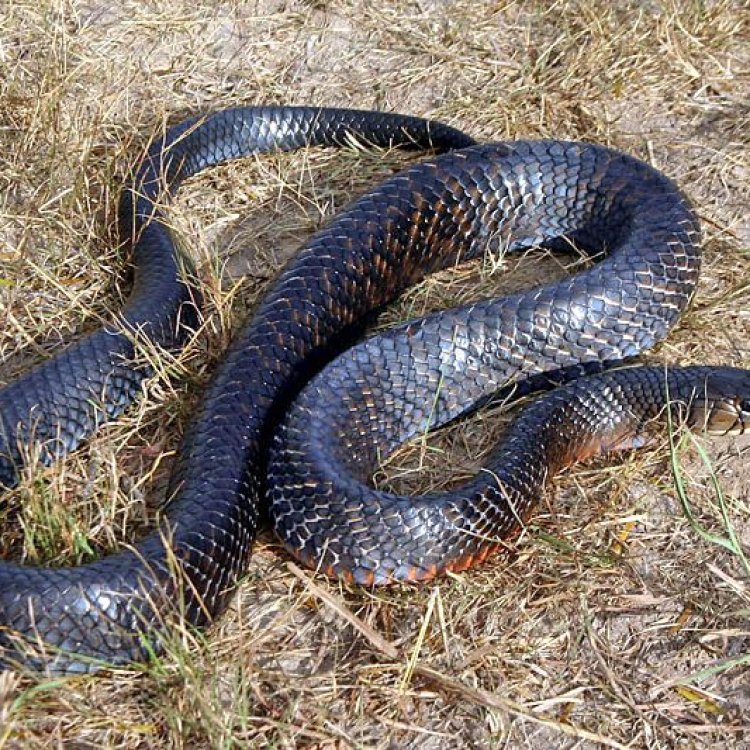
Texas Indigo Snake: The Mighty Serpent of the Southern and Western United States
Disclaimer: The content provided is for informational purposes only. We cannot guarantee the accuracy of the information on this page 100%. All information provided here may change without prior notice.

